Asymmetric carbon atom.
Step-by-Step Solution:
1. Definition of Asymmetric Carbon Atom:
An asymmetric carbon atom, also known as a chiral carbon atom, is defined as a carbon atom that is bonded to four different groups or atoms. This unique arrangement allows for the existence of two non-superimposable mirror images, known as enantiomers.
2. Characteristics of Asymmetric Carbon:
- The carbon atom must be tetravalent, meaning it forms four bonds.
- Each of the four groups attached to the carbon must be different from one another. This difference is crucial for chirality.
3. Examples of Asymmetric Carbon Atoms:
Consider a carbon atom bonded to the following four different groups:
- A chlorine atom (Cl)
- A bromine atom (Br)
- An iodine atom (I)
- A fluorine atom (F)
In this example, the carbon atom is asymmetric because it is attached to four distinct atoms/groups.
4. Importance of Asymmetric Carbon:
Asymmetric carbon atoms are significant in organic chemistry because they lead to the formation of chiral molecules. These chiral molecules can have different properties and behaviors, especially in biological systems, where the orientation of molecules can affect their function.
An asymmetric carbon atom, also known as a chiral carbon atom, is defined as a carbon atom that is bonded to four different groups or atoms. This unique arrangement allows for the existence of two non-superimposable mirror images, known as enantiomers.
- The carbon atom must be tetravalent, meaning it forms four bonds.
- Each of the four groups attached to the carbon must be different from one another. This difference is crucial for chirality.
Consider a carbon atom bonded to the following four different groups:
- A chlorine atom (Cl)
- A bromine atom (Br)
- An iodine atom (I)
- A fluorine atom (F)
In this example, the carbon atom is asymmetric because it is attached to four distinct atoms/groups.
Asymmetric carbon atoms are significant in organic chemistry because they lead to the formation of chiral molecules. These chiral molecules can have different properties and behaviors, especially in biological systems, where the orientation of molecules can affect their function.
Similar Questions
An organic acid (A) (C5H10O2) reacts with Br2 in presence of phosphorus to give (B). Compound (B) contains an asymmetric carbon atom and yields (C). On dehydrohalogention, compound (C) does not show geometric isomersim and on decarboxylation gives an alkene (D) which on ozonlysis isomerism and on decarboxylation gives an alkene (D) which on ozonolysis give (E) and (F). Compound (E) gives a positive Schiff's test but (F) doesn 't. Give structures of (A) to (F) with reasons.
View SolutionAn organic acid (A), C5H10O2 reacts with Br2 in the presence of phosphorous to give (B). Compound (B) contains an asymmetric carbon atom and yield (C) on dehydrabromination. Compound (C) does not show geometric isomerism and on decarboxylation give an alkene (D) which on ozonolysis gives (E) and (F), compound (E) gives a positive schiff's test but (F) does not. Give structures of (A) to (F) with reasons.
View Solution
Knowledge Check
A line which bisects a compound in two equal parts and both parts appear to be the mirror image of each other, such kind of symmetry is known as plane of symmetry
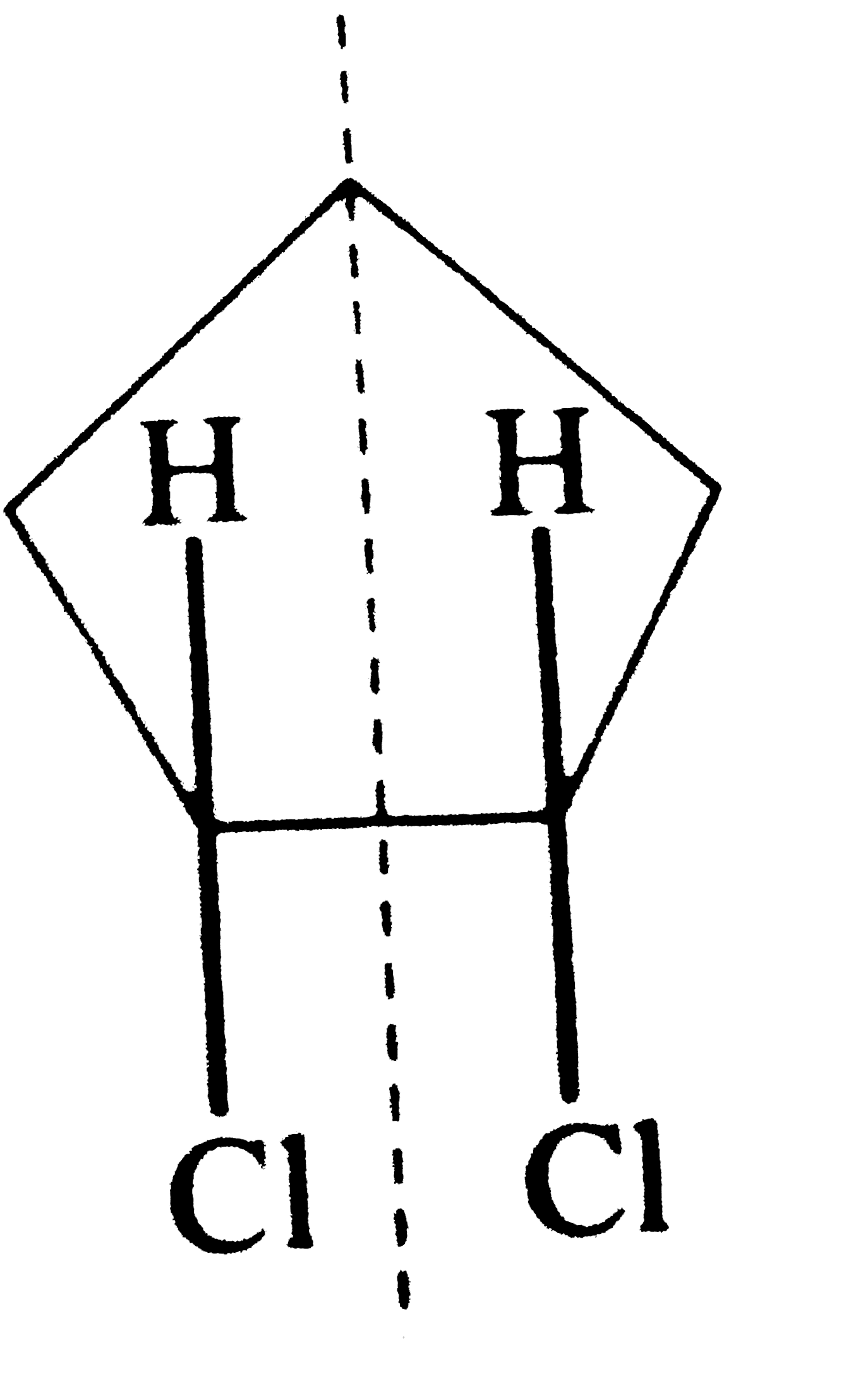
Any molecule that has a internald mirror palne of symmetry cannot be chiral, even thought it may contain asymmetric carbon atoms.
Which of the following compound optically active?A B
B C
C D
D
A line which bisects a compound in two equal parts and both parts appear to be the mirror image of each other, such kind of symmetry is known as plane of symmetry

Any molecule that has a internald mirror palne of symmetry cannot be chiral, even thought it may contain asymmetric carbon atoms.
Which of the following compounds is not chiral?A B
B C
C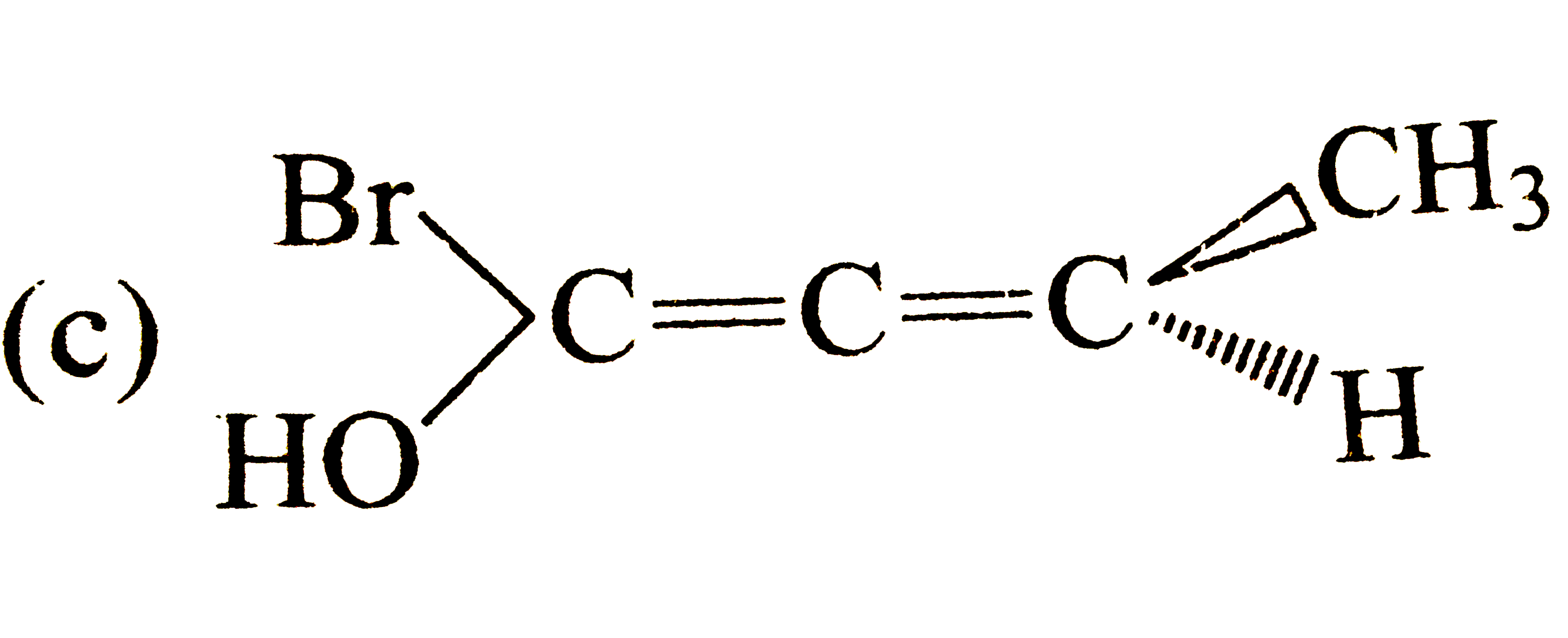 D
D
A line which bisects a compound in two equal parts and both parts appear to be the mirror image of each other, such kind of symmetry is known as plane of symmetry
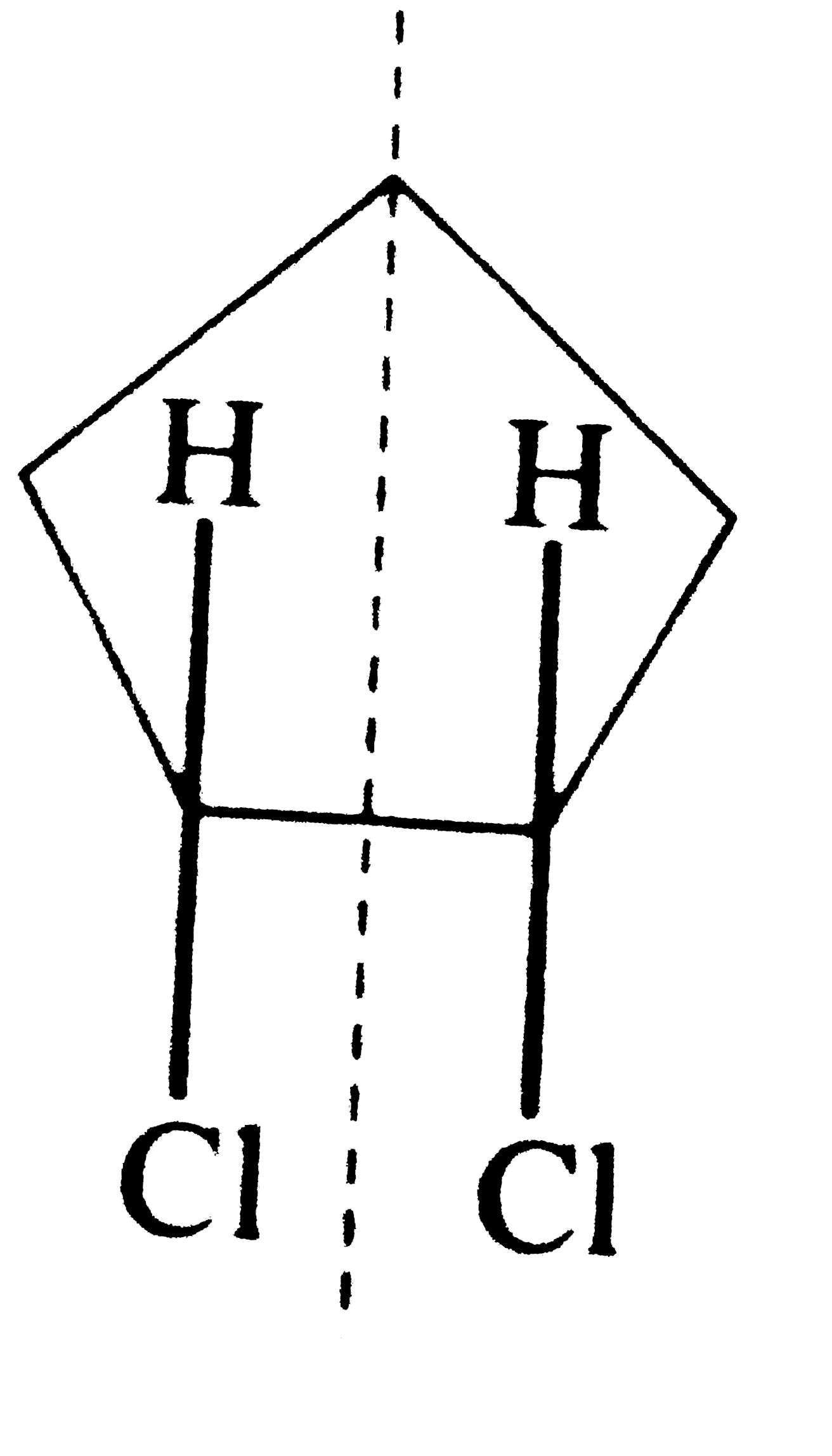
Any molecule that has a internald mirror palne of symmetry cannot be chiral, even thought it may contain asymmetric carbon atoms.
Which of the following compounds does not contain plane of symmetry?A B
B C
C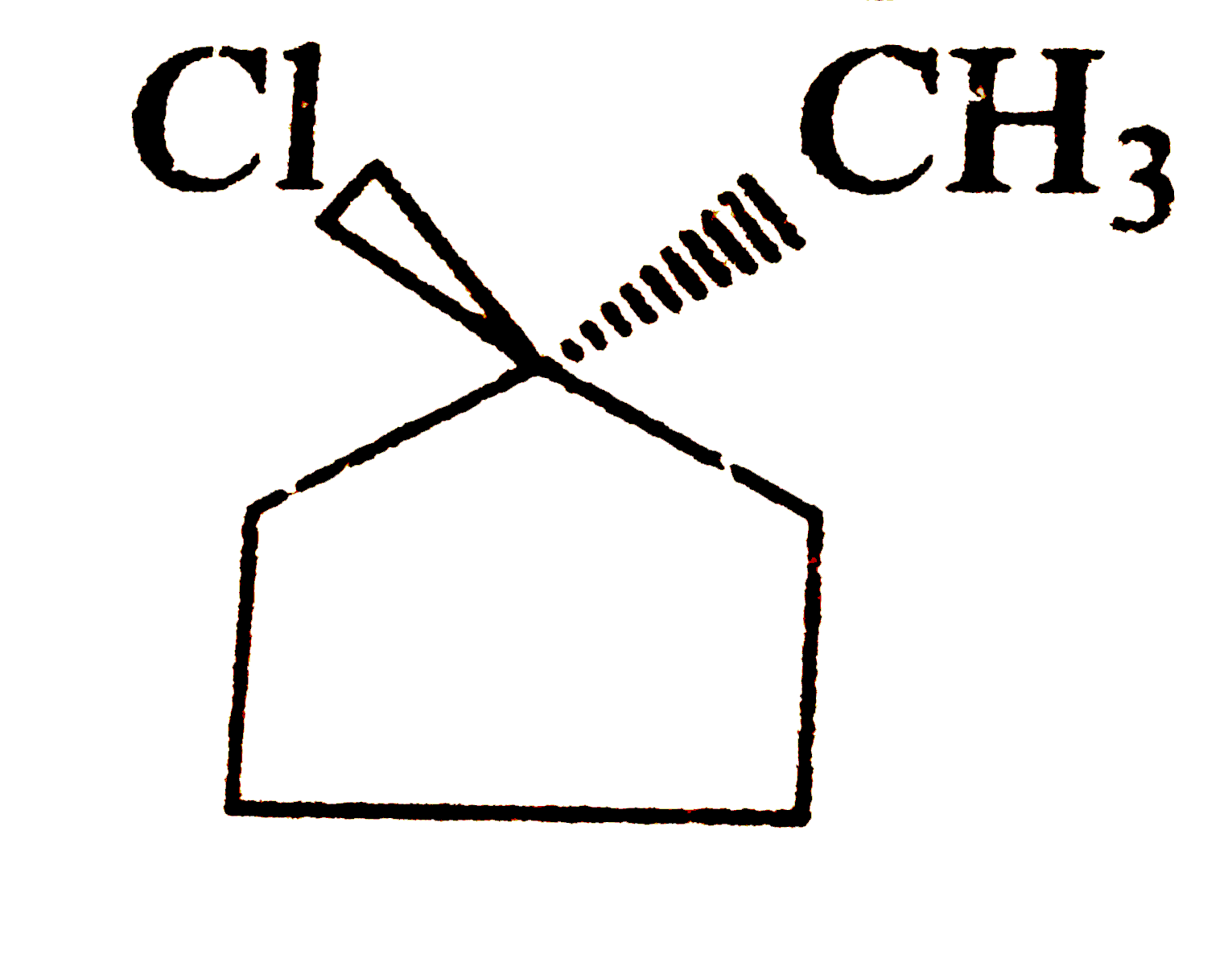 D
D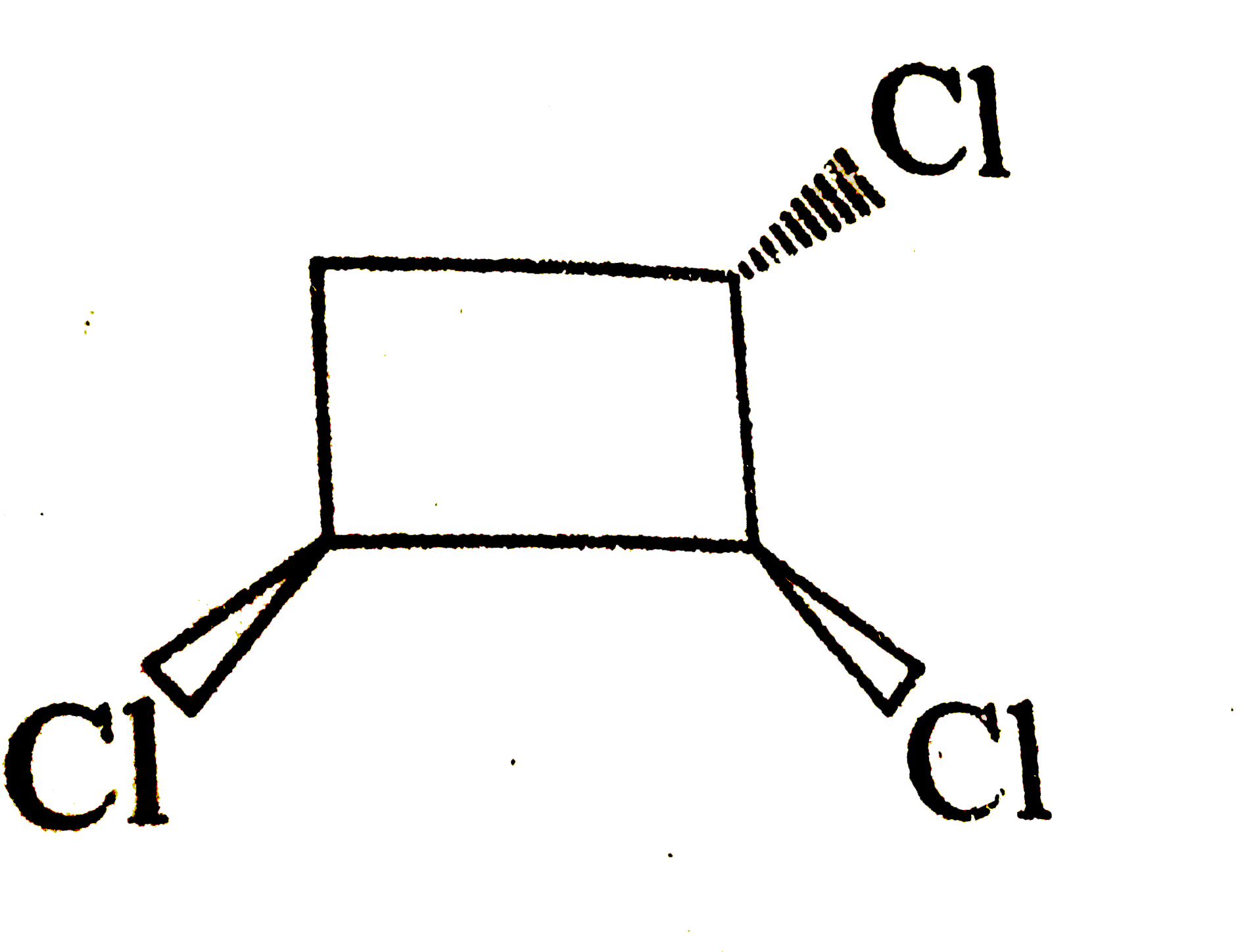
An organic acid (A), C5H10O2 reacts with Br2 in the presence of phosphorus to give (B). Compound (B) contains an asymmetric carbon atom and yields (C ) on dehydrbomination. Compound (C ) does not show geometric isomerism and on decarboxylation gives on alkene (D) which on ozonolysis gives (E) and (F). Compound (E) gives a positive Schiff's test but (F) does not. Give the structures of (A) to (F) with reasons.
View SolutionAn organic compound (A) C5H10O2 reacts with Br2 in presence of phosphorus to give (B). Compound (B) contains an asymmetric carbon atom and yields (C) on dehydrobromination compound (C) does not show geometrical isomerism and on decarboxylation gives an alkene (D) which on ozonolysis gives E and F. Compound (E) gives positive Schiff test but (F) does not.

View SolutionAn organic compound (A) C5H10O2 reacts with Br2 in presence of phosphorus to give (B). Compound (B) contains an asymmetric carbon atom and yields (C) on dehydrobromination compound (C) does not show geometrical isomerism and on decarboxylation gives an alkene (D) which on ozonolysis gives E and F. Compound (E) gives positive Schiff test but (F) does not.
Identify correct structure of A:
View SolutionAn organic compound (A) C5H10O2 reacts with Br2 in presence of phosphorus to give (B). Compound (B) contains an asymmetric carbon atom and yields (C) on dehydrobromination compound (C) does not show geometrical isomerism and on decarboxylation gives an alkene (D) which on ozonolysis gives E and F. Compound (E) gives positive Schiff test but (F) does not.
Find out structure of D :
View SolutionA amino acid without asymmetrical carbon atom is
View Solution